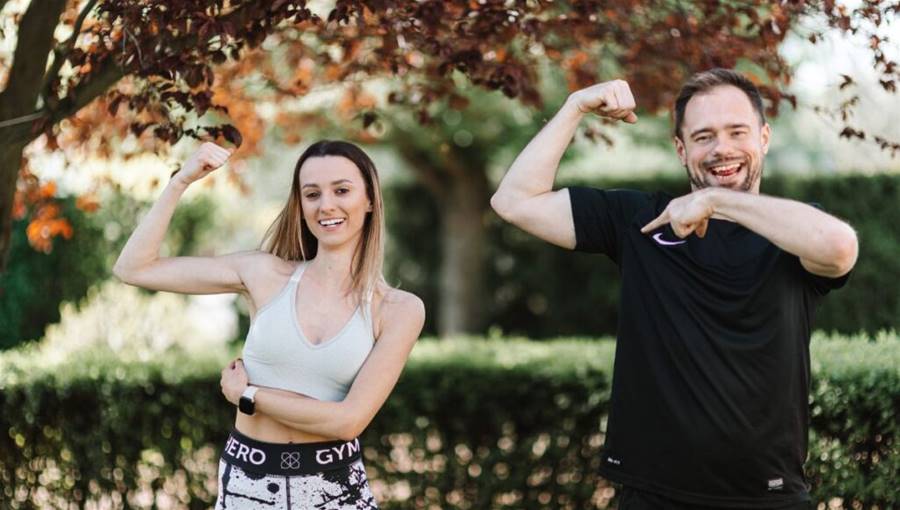

These are typical exercises people do at the gym and, sadly, usually are done improperly. But soon that won’t happen to you. Check out the 12 gym exercises you will never do wrong again.
The person who is advocating for you to rethink how you should be doing these 12 gym exercises is Jeff Cavaliere. was the head physical therapist of the New York Mets for 3 years and is now a YouTube sensation. He delivers clear information without noise on his

In his , he highlights 12 common exercise mistakes that people often make during their gym and home workouts.
By addressing these errors, you can learn how to perform each exercise correctly, leading to better muscle-building results and injury prevention.
The primary reasons for these mistakes are either poor initial learning or the tendency to revert to compensatory movements when fatigue sets in during workouts. Cavaliere aims to provide valuable insights to help viewers avoid these errors, ensuring their exercises are performed optimally for maximum benefits.
The list of exercises is as follows:
Here are some of the exercises explained by Cavaliere so that you will never do them wrong again.
Firstly, he addresses the common mistake made during the glute bridge. Many individuals tend to put themselves in anterior pelvic tilt, unintentionally shifting the load from the glutes to the lower back. To rectify this, the pelvis should be in a posterior tilt when performing the glute bridge, allowing for full hip extension and targeting the glutes effectively.

Cavaliere also points out a common mistake made during dumbbell curls—lack of supination. As the primary function of the biceps is to supinate the forearm, it is essential to turn the palms up and out during curls to build the biggest biceps possible.
Next is an issue with the barbell squat. It is crucial to allow the pelvis and chest to move together through space during the squat. Some individuals may allow their hips to rise before their chest, which can resemble a good morning exercise. To perform the squat correctly, one must ensure that the chest and pelvis move simultaneously throughout the movement.
The bench dip is a common home exercise that often goes awry due to improper hand placement. Internal rotation of the shoulders can lead to potential injuries. The solution is to turn the hands out, preventing internal rotation and safeguarding the shoulders.
The 1-arm row, a gym exercise, is also frequently performed incorrectly. Cavaliere offers two crucial fixes for this exercise. Firstly, individuals should avoid the risk of inguinal hernia by placing both feet on the ground instead of having one knee on the bench. Secondly, instead of performing a hammer curl with the dumbbell, it is essential to row the elbow back behind the body to activate the lats effectively.
For the pull-up, Jeff addresses a subtle yet significant workout mistake—crossing the legs behind the body. By keeping the legs in front and rigid throughout the exercise, stability is maintained, leading to more efficient pullups and better muscle building.
Moving on to triceps exercises, Cavaliere highlights the mistake of performing traditional skull crushers instead of lying triceps extensions. By getting the bar back behind the head while lying on a bench, the stretch on the long head of the triceps is increased, leading to better results.

The kettlebell swing is another exercise with a common mistake. Instead of lifting the kettlebell actively, individuals should focus on hinging at the hips and powering through extension to move the weight effectively.
This prevents the front delts from doing all the work.
For calf raises, bouncing is a typical mistake that limits muscle growth potential. By slowing down the tempo and increasing the time under tension in both the stretched and contracted positions, better calf development can be achieved.
When performing push-ups, flaring the elbows out to 90º is a mistake that decreases the range of motion and potential muscle growth. To avoid shoulder injury and discomfort, Cavaliere advises keeping the arms at a 45-60º angle instead.
In conclusion, understanding and correcting exercise mistakes is crucial for achieving optimal results and preventing injuries during workouts.
By addressing the 12 common exercise mistakes outlined in the video, individuals can ensure they are performing each exercise correctly to maximize muscle building and fitness progress.
Watch Cavaliere’s video below to fully understand the 12 gym exercises you will never do wrong again after this.
Progressive overload is a fundamental principle of exercise training that involves gradually increasing the stress placed on the body during exercise over time. The idea is that in order to make progress and achieve better fitness and strength, you need to challenge your body by gradually increasing the amount of weight, repetitions, or sets you perform during an exercise.
By progressively increasing the load on your muscles, you force them to adapt to the increased demand, which leads to improved strength and endurance. This principle applies to any form of exercise, whether you’re lifting weights, running, or doing bodyweight exercises like push-ups or squats.
However, it’s important to progress gradually and safely, and to give your body time to recover between workouts. If you increase the weight or intensity too quickly, you risk injuring yourself or experiencing burnout. A well-designed exercise program should take into account the principles of progressive overload to help you achieve your fitness goals safely and effectively.

There are several important nutritional factors to consider when trying to lose weight. Here are some of the most crucial ones:

Remember that weight loss is a journey that requires consistency, patience, and persistence. By focusing on these nutritional factors, you can create a sustainable, healthy diet that supports your weight loss goals.
Image Sources

